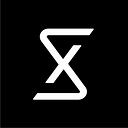Fountain of Hygiene: Redesigning the Hand Sanitizing Experience
PART 1: The Proposal
Unless you live on Antartica, it’s likely your world has been (or is about to be) significantly impacted by Coronavirus. It’s certainly been front and center in my world for the past few weeks, so for my final project I’ll be looking at redesigning the hand sanitizing experience.
This project is wholly inspired by Bompas & Parr’s Fountain of Hygiene design competition:
With more than 190 countries and territories now affected by coronavirus (COVID-19), hand washing and enhanced hygiene has been identified by the British Government as one of the most effective way to prevent and slow its spread. The competition seeks to explore the aesthetic, functional, social, gestural and experiential possibilities of enhanced hygiene. It is hoped that this will accelerate the establishment of new behavioural norms which benefit the ongoing health of global society. Ultimately the aim is to explore how people can safely re-enter the public realm.
Through a rethinking of the artefacts, gestures, rituals and communication of hygiene and sanitiser gel, the open competition seeks to normalise enhanced cleanliness in both the public and domestic realms. This is with a view to exploring how people can safely move back towards the rhythms of their lives, pre-virus.
My goal is to actually have something to submit for the design competition, but this will require finalizing a concept quickly since the deadline to submit my concept is April 5.
While I don’t yet have a realized concept for this project, I see it taking shape in one of two ways:
- Experiential focus with multiple artifacts. For this I envision using Rhino to create variations of a single artifact (similar to the my parametric decanter project last semester).
- Aesthetic focus with one final output. This would likely involve designing a new, more aesthetically appealing hand sanitizer dispenser and I would create a parametric pattern in grasshopper to apply to the final product.
At this point, I’m more interested in the former because I’m more drawn toward designing experiences for people to engage with. My goal is to have this project easily replicated so the parts can be 3d printed anywhere.
My first task is to narrow on a concept. Then I should have a clearer idea of the workflow and resources needed to execute.
Update 4/9/20: Proposal Submitted
I landed on a concept and submitted it for the fountain of hygiene competition.
After thinking more about how parametric design might apply to the hand sanitizing experience, I remembered the campaign Ogilvy did for Nutella in Italy in which they used an algorithm to generate millions of different unique patterns to use as labels. I started thinking about what parameters I might use to generate different bottle shapes and decided I would translate the word “clean” into different languages and use the variations to generate unique patterns for the bottle.
Update 4/15/20: Shortlisted
My design made the shortlist alongside some very impressive concepts submitted by other designers. Neat!
PART 2: Execution
Once my design made the shortlist, I definitely felt the pressure to make something interesting. I had thought out the concept, but hadn’t yet figured out how I would make it come to fruition.
Attempt 1: Revolve
When I started thinking about taking sound and turning it into a 3d pattern, I first thought to trace the sound wave and revolve it in Rhino. I tried this a few different ways, but it wasn’t turning out in a way I liked:
Attempt 2: Firefly
After doing a bit of research, I found a tutorial from parametric house about creating animation from audio using a grasshopper plugin called Firefly. The plugin only works on windows, so I had to commandeer a PC to start experimenting.
I was able to generate some cool wave forms using audio, but still wasn’t sure how I could apply this to a sanitizer bottle. Just adding it to the outside of a bottle didn’t seem to communicate what I was going for.
Attempt 3: Lofting to form
Still unsure how exactly I would translate words to form, I went back into rhino and started constructing a bottle so I would have a surface to work from. I also took the recording of the word clean in 9 different languages and traced the sound waves with a control point curve. Once I had them all together, I started messing with the loft command and finally started to see some interesting topographic shapes emerge:
I tried applying the wave forms to different shapes with varying degrees of success. The forms, while visually interesting, weren’t really matching with the original concept and I wasn’t sure how these might actually be produced or printed.
The big a-ha moment for me was realizing I might be able to apply the wave form to the inside of the bottle. This flip in thinking finally seemed to be the solution to my problems.
I chose 5 variations of the word clean and using the loft command, created a 3D wave form for each. These became the inside base of the bottles:

